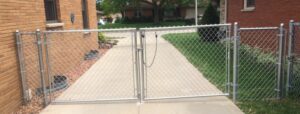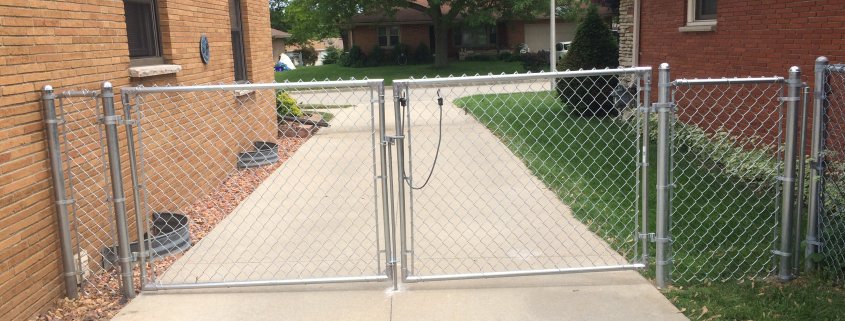While many people choose to DIY, hiring a professional will save hours of labor and ensure the fence is installed properly. A licensed fence contractor can also help you get a permit and ensure your installation meets local codes.
Chain Link Fence New Jersey comes in a variety of styles and sizes. Each option has a unique look that can meet specific needs.
A chain-link fence can be a cost-effective solution to limit access or protect an area, such as a yard or vegetable garden. It allows light to pass through and is often less expensive than other fencing options, such as wood or vinyl. It also requires fewer maintenance expenses, as the material is easy to clean and does not attract dirt. In addition, it is a great option for areas where the fence will be used as a kennel or to contain livestock.
There are a few important factors that can influence the cost of a chain-link fence, including its height and mesh size. First, determine how high you want the fence to be and how long it will be. Next, figure out the cost of the wire per linear foot and add in any other materials you will need, such as a gate or posts. Once you have a rough estimate, check to see if your region requires a permit to install a fence, as this can add to the overall price of the project.
The type of finish that you choose can also affect the price of your chain-link fence. While galvanized metal is typically the most affordable option, a vinyl-coated or powder-coated finish can increase the life of your fence and give it a more attractive appearance. You can also choose to paint the fence, but this can be a time-consuming and costly project.
When estimating the cost of a chain link fence, remember to include the number and style of gates that you will need as well as any other additional features, such as a cyclone- or hurricane-rated finish. You will also need to consider the cost of any specialized hardware or post caps.
Most chain link fences are installed using angle iron posts that are concreted into the ground, but some companies use tubular steel posts instead. These are lighter and stronger than angle iron, but they require more excavation and concrete to set into the ground. When choosing a post, make sure that it is heavy enough to resist wind and that it is long enough for your desired height of fence.
Durable
Whether you need a commercial enclosure, want to protect HVAC equipment, or just want to enclose your backyard, chain link fencing is a durable and practical option. It’s easy to install and comes in a variety of heights. Moreover, you can customize its appearance by adding screening, and it’s also relatively low-maintenance. If you’re looking for a more natural look, try covering your chain-link fence with vines like ivy or morning glory. These plants grow quickly and add color to your yard. They can also help block noise from the street or neighboring homes.
The most important part of a chain-link fence is the framework, which is a series of steel tubes that act as posts. This framework is then hung with wire mesh fabric in different gauges. A lower gauge, such as 9-gauge, is typically used for residential applications, while a higher gauge, like 11-gauge, is used in areas where security is a concern.
While chain link is a durable material, it’s not impervious to damage. A fallen tree or other object can damage the steel, and criminals can also cut through it. Because of this, it’s important to maintain your fence regularly.
A good place to start is by removing any debris from around the fence, such as branches or leaves. Then, check for rust or loose screws and bolts. If you find any, tighten them. It’s also a good idea to periodically wash your fence with soapy water. This will keep it clean and prevent dirt from building up.
In addition, it’s important to avoid climbing on your fence at all times. Climbing can bend the support posts and pull them away from the frame, which could weaken entire lengths of fencing. To prevent this, consider installing vinyl slats or other barriers to discourage children and pets from climbing on the fence.
Another way to make your chain-link fence more durable is by securing it to the ground with concrete. This will prevent the fence from moving due to extreme weather conditions or other causes. It will also extend the life of your fence.
easy to maintain
When properly maintained, chain-link fences can last for decades. Regularly removing vines and weeds and checking for any damage from weather or pets is one of the most important parts of maintaining your fence. It is also a good idea to paint the chain link fence with anti-rust paint when signs of rust begin to show. If left untreated, rust will weaken the steel wire and shorten your fence’s lifespan. When painting your fence, use a roller brush to apply the paint and avoid touching the galvanized coating on the fence itself. This will prevent the paint from flaking and causing further damage to your fence.
For most homeowners, a chain-link fence is the best option for their property. Not only is it highly effective, but it’s also affordable and easy to maintain. This type of fencing is available in a wide variety of colors and gauges, making it an excellent choice for any home. It is also available with an attractive hex pattern that will help hide unsightly areas of your yard.
However, even the most durable fence will need maintenance from time to time. For example, if your fence gets a lot of traffic, you may need to repair the gates or tension wire. You should also regularly inspect your fence to see if any parts need replacement. If the chain link fence has a gate, you should check to make sure the hinges are in working order and that the door can be opened and closed easily.
A chain-link fence can be repaired easily if it is damaged by animals or the elements. Depending on the extent of the damage, you may need to replace a small section of the fence or the entire section. The woven wire is hooked together at the top and bottom, so it’s easy to fix damaged sections. First, find a point of the fence that hasn’t been touched by the damaged section. Then, use pliers to straighten out the hooked end of the wire and untwist it at the bottom.
Versatile
Chain-link fences are a common sight in our everyday lives. They’re used in many different environments, from parks to city pools to even our own backyards. They have remained a popular option for commercial and residential fencing because they’re durable, cost-effective, and versatile.
These versatile fences are available in a wide range of designs and colors. They can be galvanized or coated with polymer or PVC. They are also able to be shaped into unique designs for aesthetic appeal. There are also many options for privacy enhancements that can be added to a chain-link fence. These include slats and windscreens, which can be placed in the wire to reduce visibility and create a more secluded space. There are also additional security features that can be added, such as barbed wire or razor wire along the top of the fence.
A chain-link fence can be a great choice for your home or business. It’s easy to install, affordable, and effective. It also looks great and can be a good addition to any outdoor space. However, it’s important to consider your goals before choosing this type of fence. The cost of chain-link fencing varies depending on the location, contractor, and materials, so make sure to get quotes from multiple companies before making a decision.
Generally, these fences are made of galvanized metal, which is more durable than the more traditional styles. The galvanization process protects the metal from rust and corrosion. There are also options that come with a color coating to match your existing decor. These coatings are more visually appealing, and they can also help protect the fence from corrosion and weathering.
The most basic chain-link fence is a woven mesh fabric of steel wires. The wires are arranged in a diamond pattern, creating a strong and sturdy structure. They are available in a variety of heights and gauges (thickness), allowing you to customize your fencing based on your specific needs. They can be used in a wide range of applications, from protecting children’s playgrounds to keeping livestock safe on farmland. They are also commonly seen in industrial settings to deter criminals.
